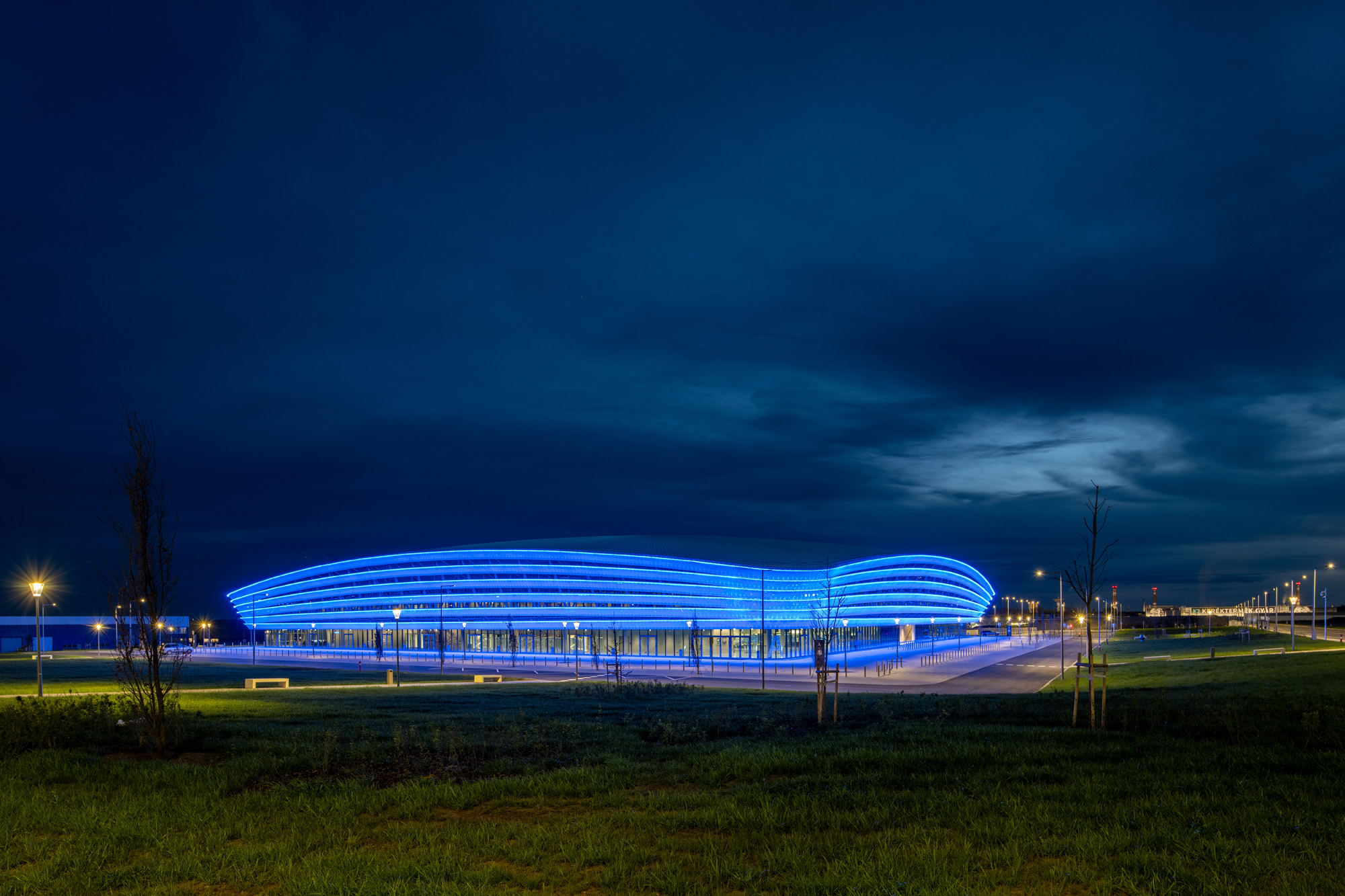Arena info
Alba Arena is where sport and culture meet - a modern, multifunctional facility that hosts a wide variety of events. The Arena is not just a venue, it is an experience centre where every detail is tailored to the needs of visitors and organisers.
With the Alba Arena, Székesfehérvár has welcomed not only a new sports facility, but a truly multifunctional venue, a major centre of cultural and sporting life in the city. Variety is not just a promise: from ice to parquet flooring, it can be adapted to all areas and host a variety of events.

Its multifunctionality also allows it to host sports such as speed skating, volleyball, handball, basketball and tennis. This versatility allows the Alba Arena to offer a diverse variety of events throughout the year, from exciting sporting events to fascinating concerts, international cultural events and conferences.
The modern architecture and the international standard of sound and lighting technology not only guarantee a special atmosphere for events, but also make the Alba Arena an iconic sports and cultural venue in Transdanubia. Since the opening of the Alba Arena, the city of Székesfehérvár boasts a much more vibrant and dynamic community space, which helps cultural and sporting life flourish. Events held here not only attract the attention of the locals, but also of the national and international community. The Arena is not just a building in Székesfehérvár; it is a meeting place where experiences and memories are made, where people come together to cheer and celebrate.
How the Alba Arena was designed
In the design of the Alba Arena, it was essential to limit the surface size in order to ensure economical construction and maintenance. The current shape offers advantages such as the fact that its continuous surfaces reduce the number of structural details and consequently the chance of failure. The design team was inspired by two key elements: the ice lenses and the icehouses.

Ice lens
The 'ice lens' design of the proposed multifunctional ice rink is able to evoke an emotional connection in the visitor, in addition to the intellectual connection to the ice; it helps to interpret the sight, create a lasting impression and a unique memory for the visitor. The view that emerges forms a lasting impression; it makes it narrative. The supporting structures of the building are (according to the logic already mentioned) monolithic reinforced concrete and a steel lattice support with a large span - in the form of an 'ice lens' - spatially spanning the support. The façades are covered with white sheet metal, with a perforated surface for inward visibility below the 'main parapet'. In the band between the floating roof and the space level, the lobby, circulation spaces are delimited by a glass structure.
Icehouse
Another defining predecessor of the design is the traditional icehouse, whose principle of operation also provides us with many lessons. The idea is that the ice is stored deep underground, where the temperature is nearly constant due to the heavy mass of earth, covered with a light roof, shading it from the summer sun. The heavy-light structures work together to create a low-energy sustainable state. The excavation of the venue (basement level) and the heavy reinforced concrete structures form a base with good thermal storage capacity, covered by a 'light' steel structure. The arena features a special entrance - the public arriving at ground level can see the entire interior of the building, allowing them to navigate and move around the interior spaces.
